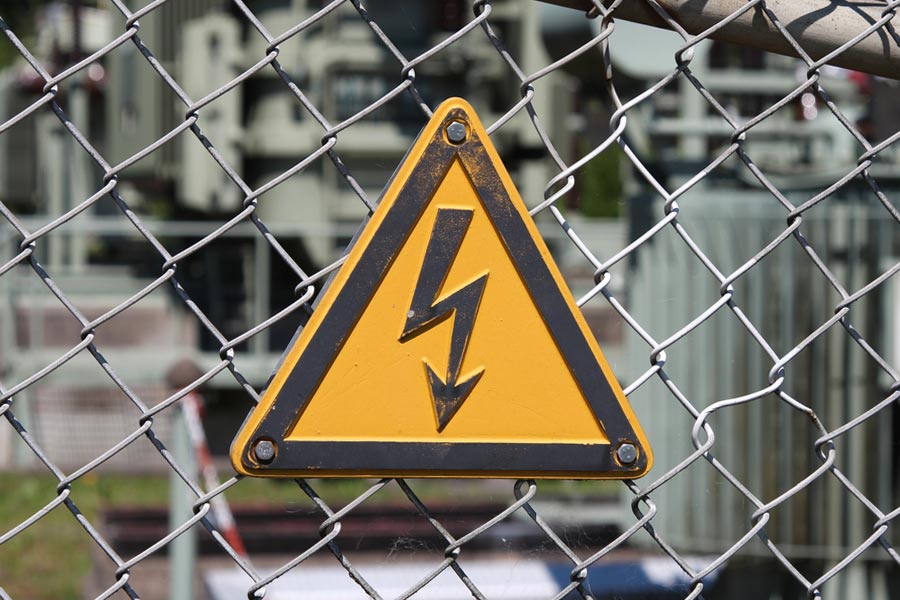Electrical Safety Hazards

The Occupational Safety and Health Administration (OSHA) has established electrical hazards as one of the “fatal four” elements that cause the majority of injuries and deaths on construction sites. Electrocutions alone account for around 9% of construction injuries and is the third highest cause of death for on site workers. In order to prevent injuries on your site, there are several major electrical hazards that you can avoid to maintain a safe environment. Be aware of these common electrical hazards, and know how to address these issues in order to mitigate potential harm.
Power Lines
Because of the extremely high voltage that overhead power lines hold, these have the potential to do a lot of harm if certain precautions are not taken. Safety signs and barriers should be present in order to alert anyone of the nearby danger. Non-electrical workers should maintain a distance of 10 feet from these electrical lines, and no equipment or materials should be stored directly underneath overhead lines.
Improper Grounding
One of the biggest electrical threats on construction sites is from improper grounding. When there is improper grounding, unwanted electrical currents can travel through non-current carrying metal objects. This presents a serious problem not only for any appliances or machines, but this can cause major shocks and electrocutions for the people around. Proper grounding, done by qualified electricians, should eliminate the transfer of unwanted voltage.
Wet Conditions
If there is standing water or wet conditions on the construction site, electrical equipment should not be operated under any circumstances. This also includes equipment that has gotten wet, as well. The presence of water greatly increases electrocution risks, so no electrical work should be done near or in wet conditions.
Overloaded Circuits
Every circuit is rated for a maximum amount of electrical current that it can withstand. Overloading a circuit can result in damaging equipment, starting fires, and causing electrical burns or shock. Knowing how many amps a circuit is rated for and how great the current is from the equipment plugged into it falls under basic electrical knowledge, and the consequences for ignoring this can be extensive. Some warning signs that a circuit is overloaded include tripping breakers and blown fuses, appliances and equipment not being fully powered, a buzzing noise coming from the receptacle, and dimmed or flashing lights.
Inadequate Wiring
Just like each circuit is rated for a maximum amount of electrical currents, the wires used have to also be the appropriate size and rating as well. Forcing too much power through inadequate wiring can lead to the wires overheating and starting a fire, damage to the circuit and equipment, and electrical shock to the workers handling it.
When it comes to skimping on electrical work, not only are you risking the physical well being of the people on the site as well as the structure itself, but it is not likely that you will pass the necessary inspections to continue work. Additionally, knowingly violating OSHA standards will result in monetary and legal consequences for the contractor and/or property owner. Having a qualified electrician committed to doing thorough work is the best way to keep your crew safe and your project on track!
https://www.tfharper.com/electrical-safety-hazards/
Comments
Post a Comment